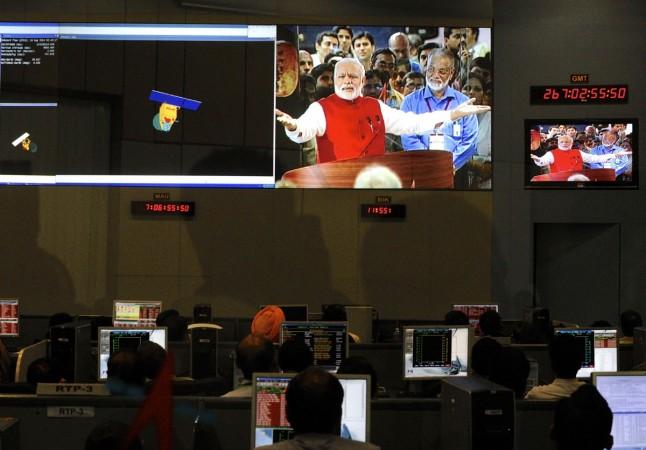
India has done it. ISRO has done it. Mangalyaan has done it. India has become the first nation to successfully place its spacecraft in Martian orbit in the first attempt, and has been propelled into the elite club, so far occupied by only three other nations – United States, Russia and the European Union.
The Indian Space Research Organisation along with the entire country went through nail-biting moments hours before the mission was achieved, the confirmation of which came in at 8:02 am.
"With today's success, India has joined an elite group of only three other agencies. India is the only country to have succeeded in the very first attempt. This was done only in three years," Prime Minister Narendra Modi said. "This will go down as a landmark in history."
India has beaten all statistical odds stacked against it during the mission – Only 21 of the 51 missions sent to Mars have succeeded.
Hopes were high ever since the most crucial operation on Wednesday -- that of reverse firing of the main liquid apogee engine along with eight other smaller engines for about 24 minutes -- went about smoothly. This brought the speed of the space craft from 22 km per second to 4.4 km per second in relation to Mars, allowing the planet's gravity to capture it.
The 1,350 kg satellite has been placed in an elliptical orbit that takes it closest to Mars at 377 kms and farthest at 80,000 kms.
While the technical objective of ISRO behind this mission was to develop technologies for inter-planetary missions, its scientific aim is to explore the surface and atmosphere of Mars and study the mineralogy, morphology and surface features in a mission expected to last from 6 to 10 months in orbit.
MOM will also study the atmosphere of Mars, using a methane gas sniffer, in a bid to unearth presence of Martian microbes if any.
It was developed by ISRO at a minimal cost of ₹450 crore ($73 million), thus paving the path for low-cost space missions. The payloads on the spacecraft comprise of five indigenous instruments that include a multi-colour imager and a methane gas sniffer. The probe will study the atmosphere and the soil of the planet.
Mangalyaan was launched on 5 November, 2013 from India's spaceport at the Satish Dhawan Space Centre, Sriharikota.
India's Mars Mission success comes barely two days after Nasa's MAVEN orbiter reached Martian orbit successfully. Together they will join a fleet of three other orbiters from Nasa and ESA.















